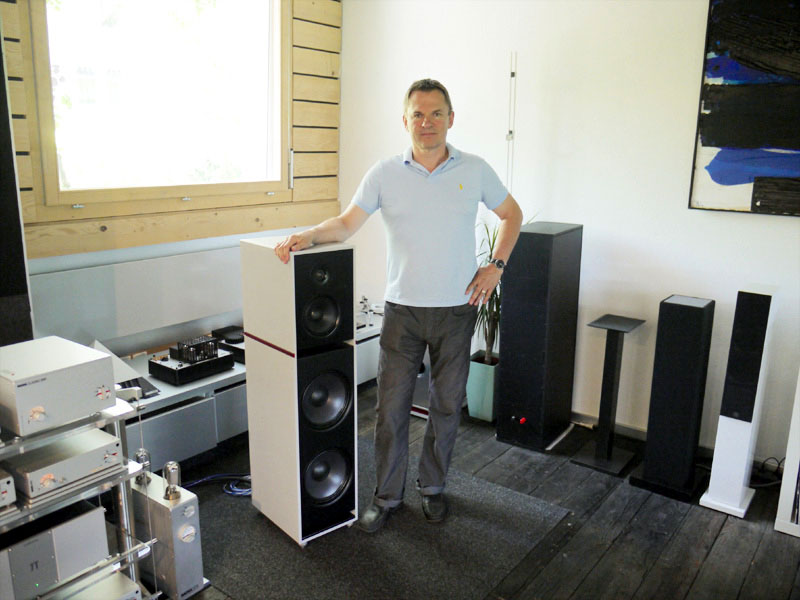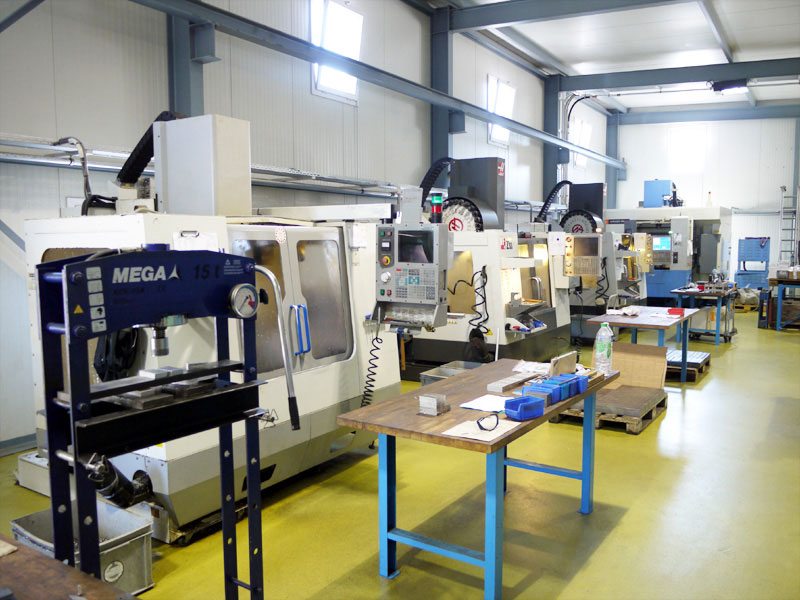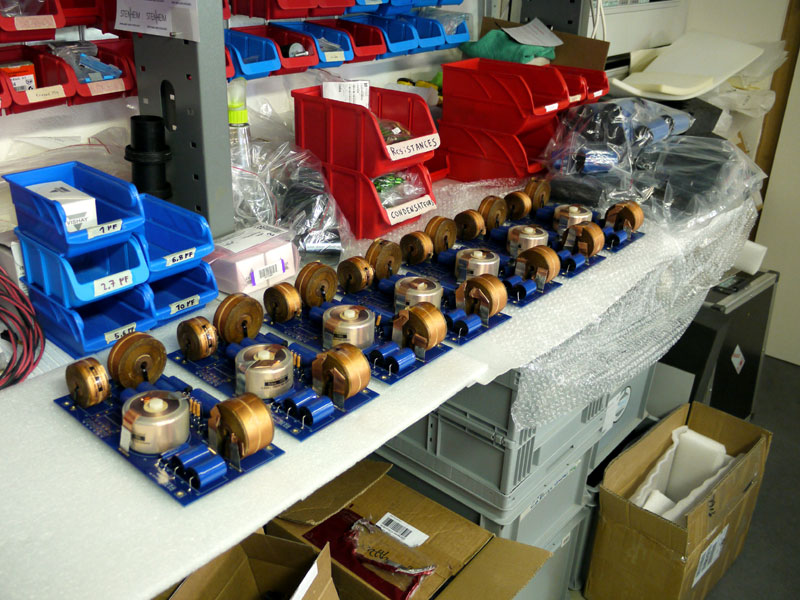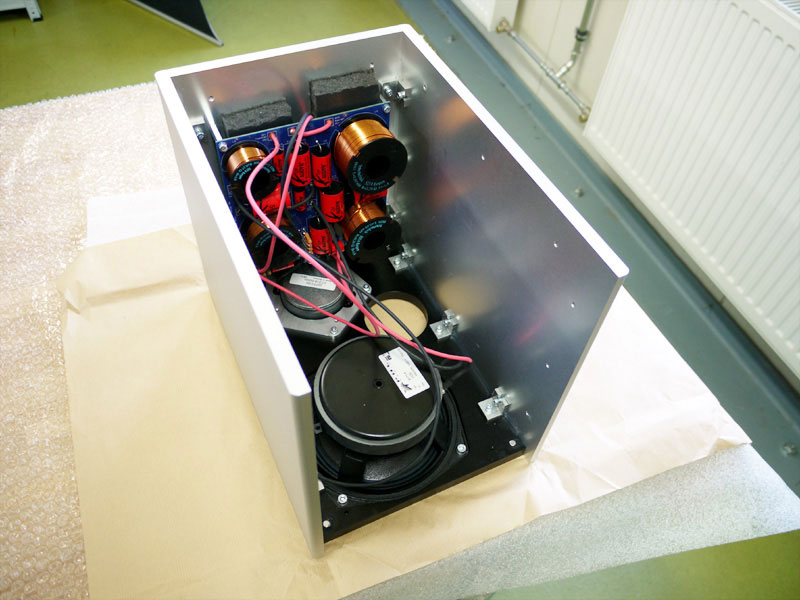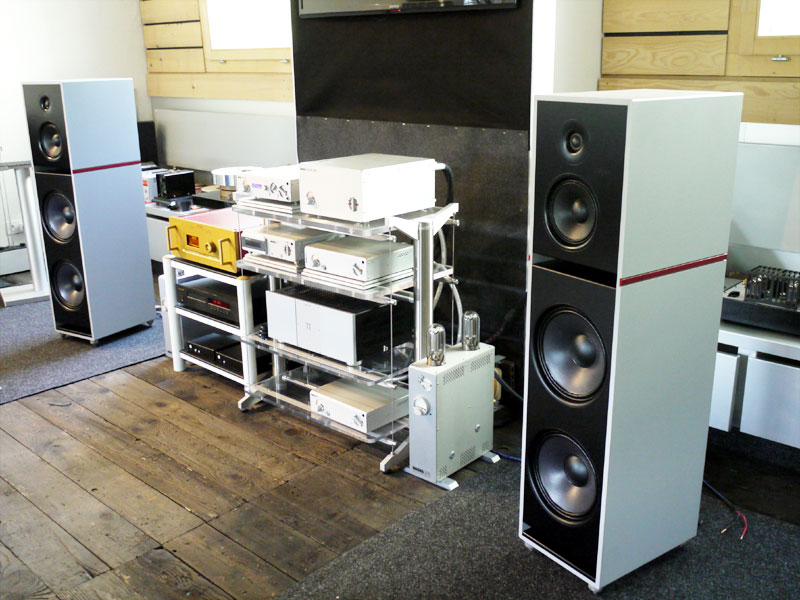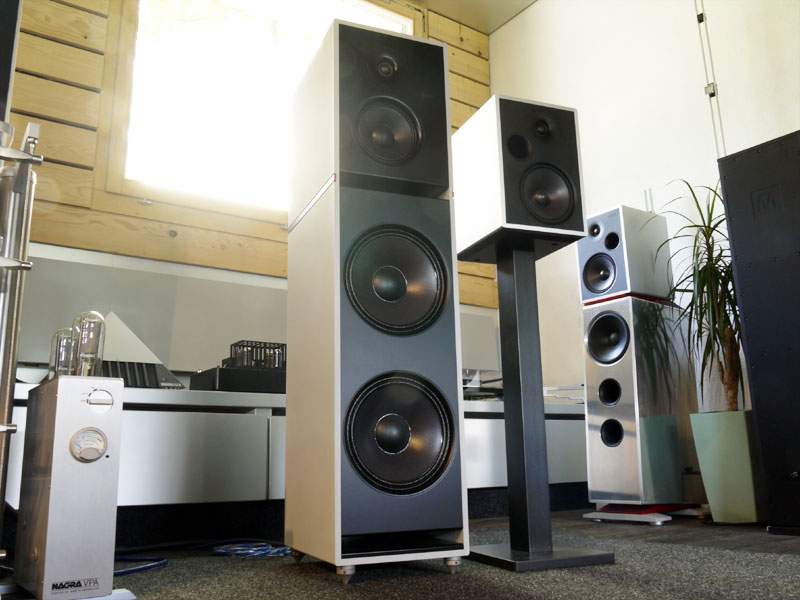Things Aren’t Always As They Seem: Visiting Stenheim Loudspeakers
Yet, it’s a considerable disappointment to me if, leaving a show, I haven’t heard at least one really impressive-sounding system or discovered at least one worthy new product (or brand) demanding further investigation -- and that’s irrespective of the size of the event. In fact, quite often, the smaller shows reveal the biggest surprises, and in that respect, the show in Lisbon, Portugal, was no exception. The best system there introduced me to both the Rui Borges turntables and Stenheim speakers, brands and products I was aware of but had never heard. Rui Borges is a subject I’m hoping to return to in the near future, but, first, it’s time to pay a little more attention to Stenheim, whose massive Reference Ultime speaker system so impressed on the end of a full suite of CH Precision electronics.
Standing head high and shoulder wide, these are definitely "man-sized" speakers, while the front- and rear-facing drivers, cellular aluminum cabinet construction (a separate enclosure for each drive unit) and motorized midrange baffles all add up to a weight of over 500 pounds per cabinet -- and an equally imposing price tag: $184,500/pair! Now, whilst I’m set up to deal with speakers of that size and weight, the logistics involved in reviewing the speakers extend way beyond just getting them into the house. So, when Stenheim’s CEO, Jean-Pascal Panchard, calmly announced that the company would be launching a conceptually identical but simplified, half-sized/quarter-priced version of the Reference Ultime a few months later in Munich, it’s an understatement to say that it piqued my interest. As it happens, the Munich presentation proved my point, definitely delivering the flip side of show sound, the new Alumine Five ($59,750/pair) failing to do itself justice in one of the prefabricated cabins optimistically described by the organizers as "sound rooms." Clearly, getting to know the new Stenheim was going to require something a little more committed than a quick visit at the High End show, which is how I came to end up in Sion, southeast of Montreux.
Stenheim was founded in 2010 by a group of ex-Goldmund employees, who launched their first product, the diminutive Alumine Two ($14,975/pair), the following year. This small two-way stand-mount featured a resolutely rectangular all-aluminum cabinet combined with traditional paper-cone/soft-dome driver technology, together with an appearance that suggested more than a hint of Goldmund DNA. But appearances can be deceptive, and this was very much its own design, with a sophisticated, materials-based approach to cabinet damping and distinctive crossover topology delivering 93dB sensitivity and an easy drive characteristic. Despite its small size, it represented a proof of concept, the conceptual basis for the Alumine Three passive bass modules and the Reference models that followed. In 2013, the original founders were tempted away by the big budgets on offer at Devialet and sold control of Stenheim to Jean-Pascal Panchard, himself ex-Nagra (the Swiss audio industry is even more incestuous than the British) and a man with considerable international sales, manufacturing and retail experience. The first order of business for the new management was to reestablish the design team and clean up the appearance of the existing wares, turning impressive performers into finished products with appearance and surface options to match their asking prices. The Alumine Two lost its visible mountings and gained a whole host of finish options, creating the exquisite compact speaker we see today, while the Alumine Two/Three ($44,975/pair) was similarly cleaned up and gained new mechanical interfaces with both the floor and its supported satellite. The first design projects from the new team (Panchard, plus Lucas Perrin and graphic designer Augustin Nussbaum) were the Reference models, products for which only the vaguest outline existed when they took over. The impressive-looking and -sounding performers I experienced in Lisbon benefited from the same attention to external finish and detail, but also clearly demonstrated just how capable and clear-sighted the new design team were when it came to sonic and musical performance. Now comes the floorstanding Alumine Five. Sharing the same midrange and tweeter used in the Reference Ultime but underpinned by a pair of 10" (as opposed to four 13") bass drivers, the new speaker also shares the same clean rectangular proportions and feature lines of the previous models, as well as the same internal design principals, each driver enjoying its own independent enclosure volume. The crossover employs a carefully executed hybrid topology, the attractive and visually compact cabinet delivering 94dB sensitivity and in-room extension down to 28Hz, while weighing in at a rather more manageable (although still grunt-inducing) 240 pounds. Unlike the Reference Ultime, which uses an external active crossover for the bass leg, demanding two extra channels of amplification, the Five’s crossover is entirely passive, making the speaker in every important respect a genuine half-sized realization of the flagship design. The bass loading is unusual, with the paired cabinets being of identical volume but different shape and independently vented by slot ports located above and below the twin enclosure. Interestingly (and despite appearances) the two ports are also actually identical, Stenheim choosing to eschew differential loading in favor of a single coherent bass leg that they feel offers greater consistency in a wider range of rooms.
Observing Stenheim speakers being assembled reinforces once again (as if it were needed) the benefits of the Swiss atelier approach to manufacturing and the sheer quality of the CNC work that’s available when it comes to producing something like a loudspeaker cabinet. Much has been made of the quality control and constructional tolerances of certain high-profile loudspeaker manufacturers who champion aluminum cabinets. Having seen and played with the parts that go together to create the Stenheim products, I will just say that this is one product range that -- should you ever need to service it -- comes apart without resorting to a sledgehammer and where, once it comes time to reassemble it, all the bolts go back in without binding.
The quality of the crossover construction and of the soldering are exemplary too, suggesting that reliability and consistency will be superior as well. All of which is, frankly, to be expected at the price. But it’s reassuring that this is a speaker where the fit, finish, hardware and peripherals, from the manual to the crates, don’t disappoint. At the best part of $60,000 a pair, the Alumine Five finds itself head to head with high-profile products such as Magico’s S5 and YG Acoustics’ Hailey, both the products of significantly noisier companies.
But what makes the Stenheim speakers so intriguing when compared to those other all-aluminum constructs is their combination of the ultimate engineer’s cabinet material with drivers that could easily be described as old school. It is a combination that has produced astonishing results from the Alumine Two and worked to spectacular (albeit unaffordable) effect in the Reference Ultime. The big question is, can Stenheim repeat the trick in a speaker that approaches both full-range performance and an enclosure that most people can actually accommodate at something that almost approaches an affordable asking price (at least in high-end terms)?
Having spent time peering at the insides of the various Stenheim speakers, I was finally ready to settle down and listen to the Alumine Five under more advantageous conditions than my previous experience. The company’s gloriously rural headquarters, nestled amongst Swiss vineyards and overlooked by the stunning mountain scenery, offered the chance to hear the Fives driven by (perhaps not surprisingly) an all-Nagra setup: a CDP CD player ($15,975), used here as a transport, an HD DAC ($29,995) and a Classic amp ($15,975). One look at the system suggested that I really was going to hear what Stenheim’s middle child could do. Clear indictors of Jean-Pascal Panchard’s retail background were to be found in the use of a Stillpoints rack and a Cardas cable loom, both paying greater-than-usual attention to the fundamentals of system infrastructure. But, in addition, a pair of Nagra MPS power supplies ($6495 each) were in use on the front-end, necessary to deliver two independent, battery-derived DC feeds to the DAC’s digital and analog sections, the CDP also benefiting from an enhanced DC feed, even though it was slumming it with one of the AC-based outputs. And just to prove that the Swiss believe in belt, braces, suspenders and double-sided tape, the whole system was fed from a 2kVA isolation transformer. From the first few bars, it was apparent that here was the Alumine Five delivering on the promise made in Lisbon. It might have lacked the effortless bandwidth and massive soundstage of the show system, but then it also lacked the Reference Ultimes, the CH Precision M1s and the huge space. Instead, the Fives’ compact cabinets and the 100 watts per channel of the Nagra Classic power amp did an astonishing job of delivering the same quick, clean sound, full of life, precision and energy that had made the big system so engaging and entertaining. This was a simple system that really let the recordings breathe, whether it was Eleanor McEvoy’s familiar vocals on Yola [Mosco MSMSACD113] or the expressive intensity and white-hot chemistry of Xavier Phillips and Francois-Frédéric Guy’s Beethoven Sonata for Cello and Piano No.3 [Harmonia Mundi/Evidence EVCD 015]. The Alumine Fives delivered a sound that was full of color and character, the wistful delicacy of McEvoy’s heartfelt singing, the vivid cut, thrust and dynamic contrast of Phillips’ cello and Guy’s piano. The recorded acoustic was clear, coherent and beautifully defined, as was the position and relationship between the players within it. Like those other speakers with aluminum cabinets mentioned above, there was no hint of boxiness, but in this case there was no hint of the cool, clinical, dry and disjointed sound that so often mars systems using those resolutely high-tech designs. Instead, the Stenheim’s unusual driver/cabinet combination really does seem to deliver the best of both worlds, while the high efficiency and relatively benign load (no three-way can be quite as easy to drive as a two-way) delivers the immediacy, dynamics and emotional engagement that make listening ultimately rewarding. What we have here is a speaker system that seems to combine high-resolution, transparency and neutrality with superb musical and rhythmic expression -- all without pulling recordings apart. Perhaps the most telling piece I played was the Camilla Wicks performance of the Sibelius Violin Concerto [EMI TOCE-16050] -- a Japanese pressing of this legendary recording. Nobody would hold this up as an audiophile-grade disc. Indeed, its bass is lumpy and detached, there’s precious little bandwidth and the orchestral sound is congested to say the least. But the playing! Wicks is magisterial in this 1952 recording, producing a performance of unrivalled grace, passion and intensity -- qualities the Stenheim speakers were only too happy to dwell on, rather than concentrating on the sonic shortcomings of the orchestral sound.
On first listen it looks like the Stenheim Alumine Five might just be that holy grail of loudspeaker design: a speaker that is genuinely neutral and revealing of musical purpose, using its resolution and transparency to cut to the heart of the intent behind the performance rather than the quality and nature of the recording that captured it. With enough bandwidth to deliver scale and impact, yet agile enough to respond to the most delicate musical input, the Five promises to be -- just like the perfect middleweight -- one of the best pound-for-pound musical transducers I’ve heard. As a friend of mine is fond of saying,
"Something happened. Something happened and we were lucky enough that somebody
captured it." If you are lucky, your system will tell you what it was that happened.
Listening to the Alumine Fives leaves no doubt that something definitely
happened. With a pair promised for review at the end of the year, I can hardly wait. |

